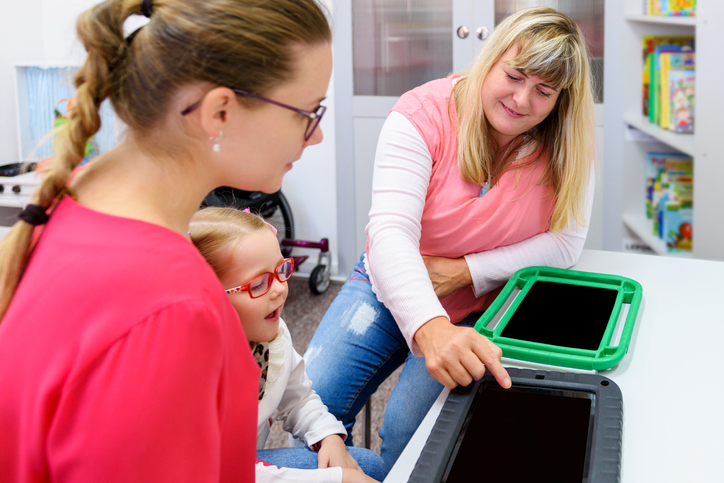
In my “other” life, apart from Orange Effect Foundation, I live in the marketing world. It all began with large brands and corporations who were striving to claim the top spots in a google search or learn how to utilize keywords and search to demonstrate how they were the best of the best. That eventually evolved into assisting what I call solo-preneurs or entrepreneurs in finding their niche in the vast world of the internet. Amidst all these discussions, one topic you cannot escape is AI, artificial intelligence.
If you ever go down the rabbit hole, as the expression goes, it can be quite overwhelming and even a bit scary. Robots and computers are reshaping the world every single day, making it very difficult to keep up. All this changing technology sparked the idea for this post, as there is tremendous potential for AI to help kids with speech needs. It can begin with something as simple as the devices we fund for non verbal children.
The Role of Technology in Speech Therapy Sessions
However, I wanted to take this a step further and explore how frequently technology is being integrated into speech therapy sessions and throughout the speech community as a whole. While conducting this research, I came across this post by Stacy Crouse titled ‘How SLPs are Using Technology in Speech Therapy (in 2024)‘. It turns out Stacy has already done the research for me! So, I reached out to her and asked for permission to share her post here.
Of the 300 responses from speech-language pathologists (SLPs) she received, over 60% use some kind of technology in their speech therapy sessions EVERY DAY. Apparently, gone are the flashcards and board games used when my child was working with their SLP! I also wasn’t familiar with Boom cards (a digital tool) that is used by 90% of the therapists surveyed. The testimonials shared in Stacy’s post attest to the benefits that technology has provided therapists and how it increasingly aids in engaging children. All of this is very exciting as we continue to ensure that every child is assessed early and receives the services they need to communicate effectively. Thanks to Stacy for her excellent work and for agreeing to share her post.

